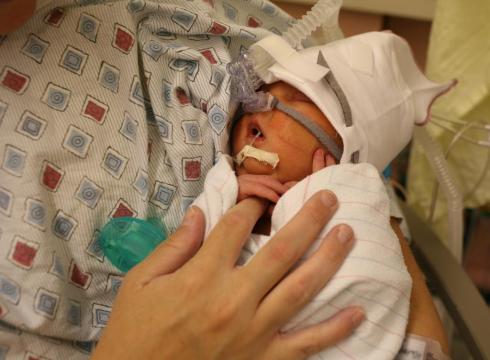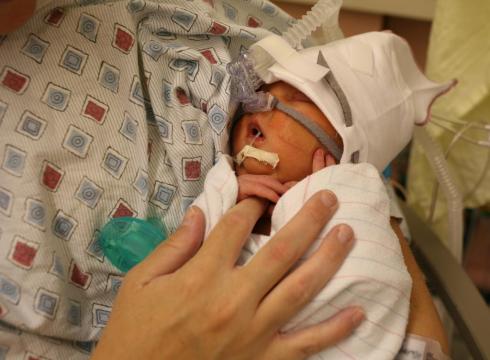
When you think of newborns who are in a neonatal intensive care unit, you assume that the baby is receiving the best of evidence-based care. There has been a great deal of research on medical interventions for these distressed newborns, but not as much nursing research on some of the important routine care issues. And this situation could worsen, depending upon the upcoming budget negotiations between President Obama and Congress. Consider the example of how to feed distressed, very ill neonates.
Gail McCain, PhD, RN, FAAN, Dean of the Hunter-Bellevue School of Nursing, has been studying the feeding of neonates for over two decades. Her work has been instrumental in our understanding of the cues that distressed neonates demonstrate to show they’re hungry. These cues are seldom the same as “term infants” (fully developed and delivered at a minimum of 40 weeks of gestation), so nurses, physicians, and even parents may not recognize that the neonate is hungry and ready to feed.
In the December 2012 issue of Nursing Research, widely considered the gold standard for nursing research journals, McCain and her colleagues report on a randomized clinical trial that focused on preterm infants with bronchopulmonary dysplasia, a condition in which the neonate’s underdeveloped lungs are injured from being on a ventilator and oxygen therapy for treatment of another respiratory condition, acute respiratory distress syndrome. These very sick infants are usually given tube feedings instead of nipple feedings. Nipple feedings can cause more respiratory distress, as the infant has to work to suck and may not have the energy reserves and oxygenation capacity to manage this. So the standard approach to helping these infants to transition from tube to nipple is to limit the nipple feedings to predetermined times and frequencies. In this new study, McCain and colleagues tried a different approach based upon their prior research.
The researchers compared the standard treatment with an experimental treatment that they call the “semidemand” method. Semidemand is based upon assessing the infant for non-term cues, such as simply being awake or sucking on fingers, instead of crying, and watching them carefully as they feed to make sure they don’t get into physiological trouble while feeding (e.g. “infant initiated and sustained sucking without cardiorespiratory distress”). This approach required continual assessment of the infant by the nurse to determine if the infant was becoming distressed from the feeding. As the researchers note in their paper, this approach “allowed for feedings to be led by the infant, rather than by the nurse.”
What difference did this new approach make? The infants in the semidemand group were able to move fully to nipple feeding in an average of 6 days, compared with 12 days for the standard care group. This was a highly significant finding, suggesting that it’s unlikely to be a fluke.
While further research may be needed to determine the impact of this change on other clinical and financial outcomes, this study illustrates the importance of exquisite observational and assessment skills by nurses to help distressed neonates through an important transition during their recovery.
So, why is it so hard to get research such as this funded? One reason is because the research questions that many nurse researchers want to study have not always been priorities for funding, including by the National Institutes of Health. The National Institute for Nursing Research (NINR) was supported by Congress in the mid-1980s because too many nurse researchers were getting great marks for the rigor of their grant proposals; but the other institutes didn’t deem their research questions as high priorities, and relatively few were funded. McCain received federal funding from NINR for this and prior studies on infant feeding. This rigorous work would not have been possible without significant funding that few organizations besides NIH and the pharmaceutical industry can support.
As the new Congress and the President look to reign in the budget deficit, it is likely that NIH funding will be flat, if not decreased. Reorganization of NIH has been on the radar screen of its directors for a number of years now, always with threats that we don’t need a NINR. If that happens, who will pay for research on things like feeding, skin care, parental support and other aspects of fundamental care for sick children?
Diana J. Mason, PhD, RN, FAAN, Rudin Professor of Nursing









